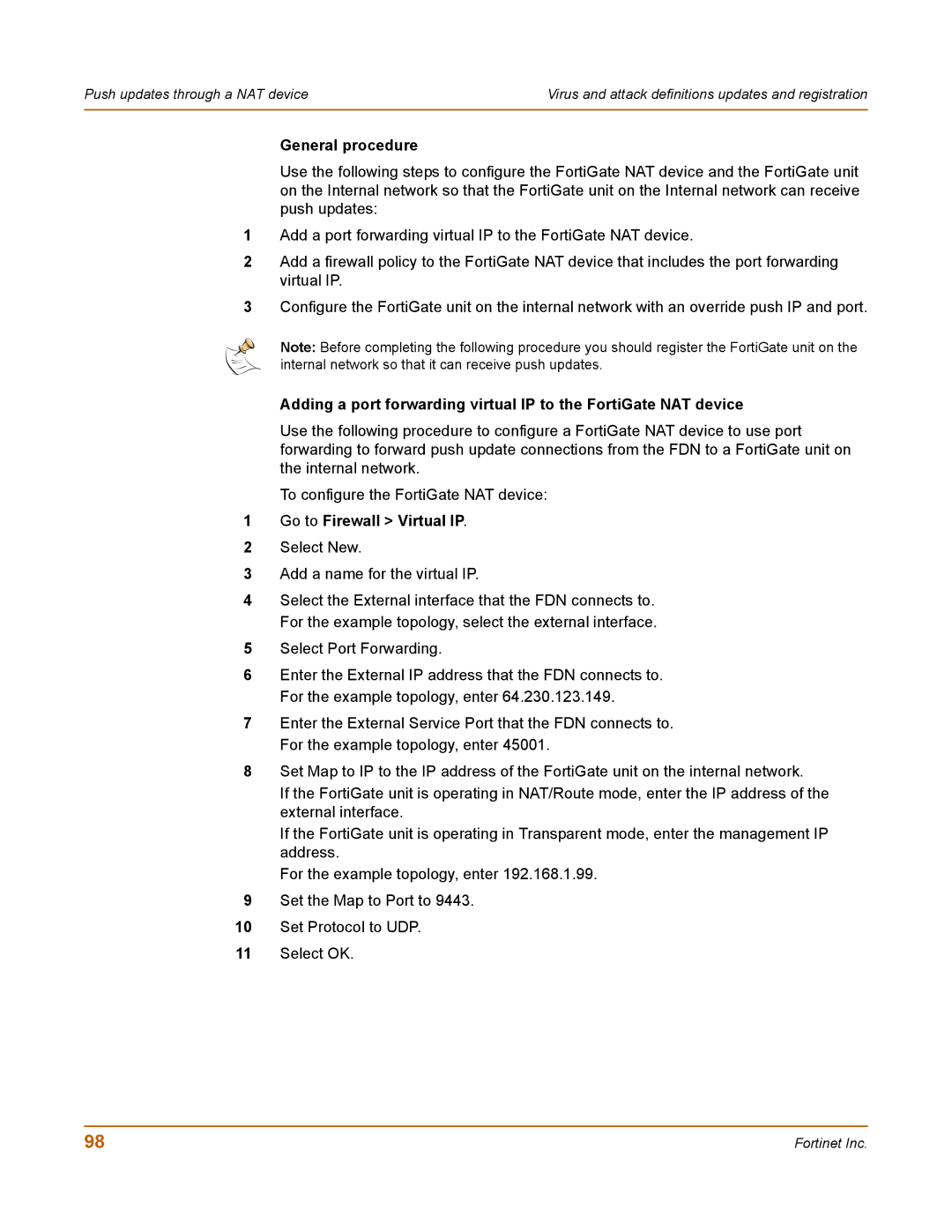
Push updates through a NAT device | Virus and attack definitions updates and registration |
|
|
General procedure
Use the following steps to configure the FortiGate NAT device and the FortiGate unit on the Internal network so that the FortiGate unit on the Internal network can receive push updates:
1Add a port forwarding virtual IP to the FortiGate NAT device.
2Add a firewall policy to the FortiGate NAT device that includes the port forwarding virtual IP.
3Configure the FortiGate unit on the internal network with an override push IP and port.
Note: Before completing the following procedure you should register the FortiGate unit on the internal network so that it can receive push updates.
Adding a port forwarding virtual IP to the FortiGate NAT device
Use the following procedure to configure a FortiGate NAT device to use port forwarding to forward push update connections from the FDN to a FortiGate unit on the internal network.
To configure the FortiGate NAT device:
1Go to Firewall > Virtual IP.
2Select New.
3Add a name for the virtual IP.
4Select the External interface that the FDN connects to. For the example topology, select the external interface.
5Select Port Forwarding.
6Enter the External IP address that the FDN connects to. For the example topology, enter 64.230.123.149.
7Enter the External Service Port that the FDN connects to. For the example topology, enter 45001.
8Set Map to IP to the IP address of the FortiGate unit on the internal network.
If the FortiGate unit is operating in NAT/Route mode, enter the IP address of the external interface.
If the FortiGate unit is operating in Transparent mode, enter the management IP address.
For the example topology, enter 192.168.1.99.
9Set the Map to Port to 9443.
10Set Protocol to UDP.
11Select OK.
98 | Fortinet Inc. |
